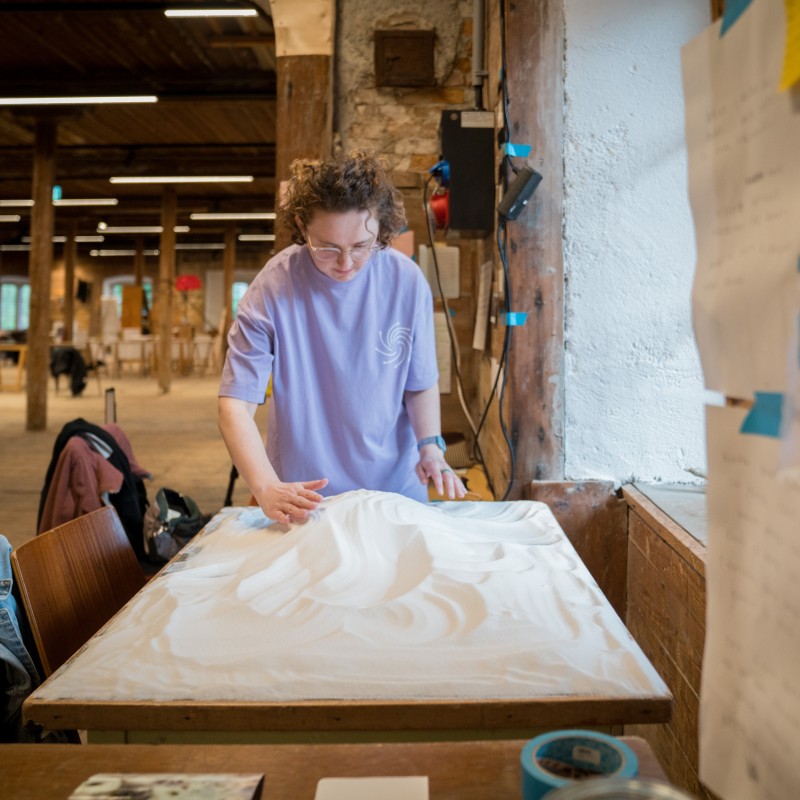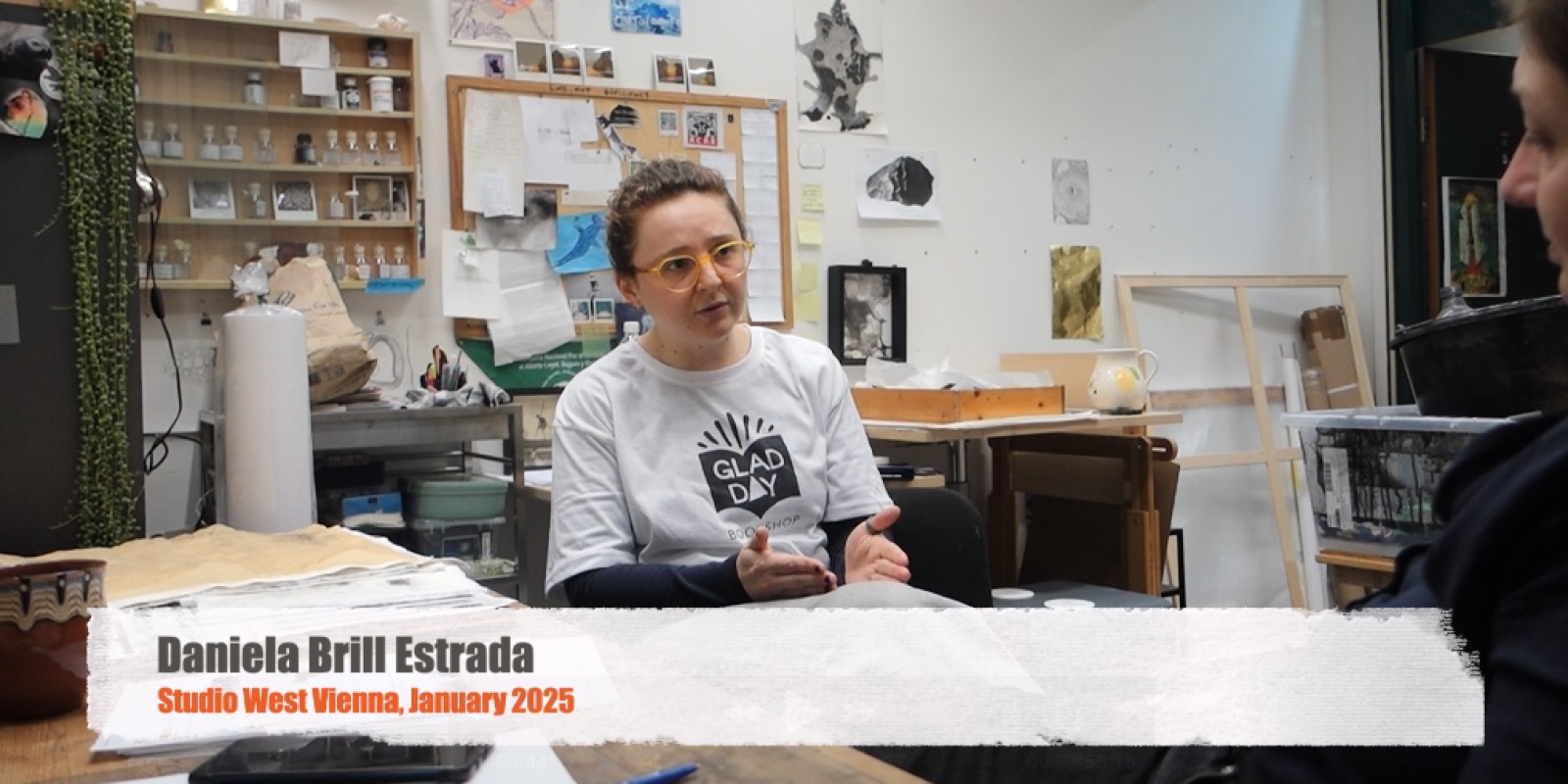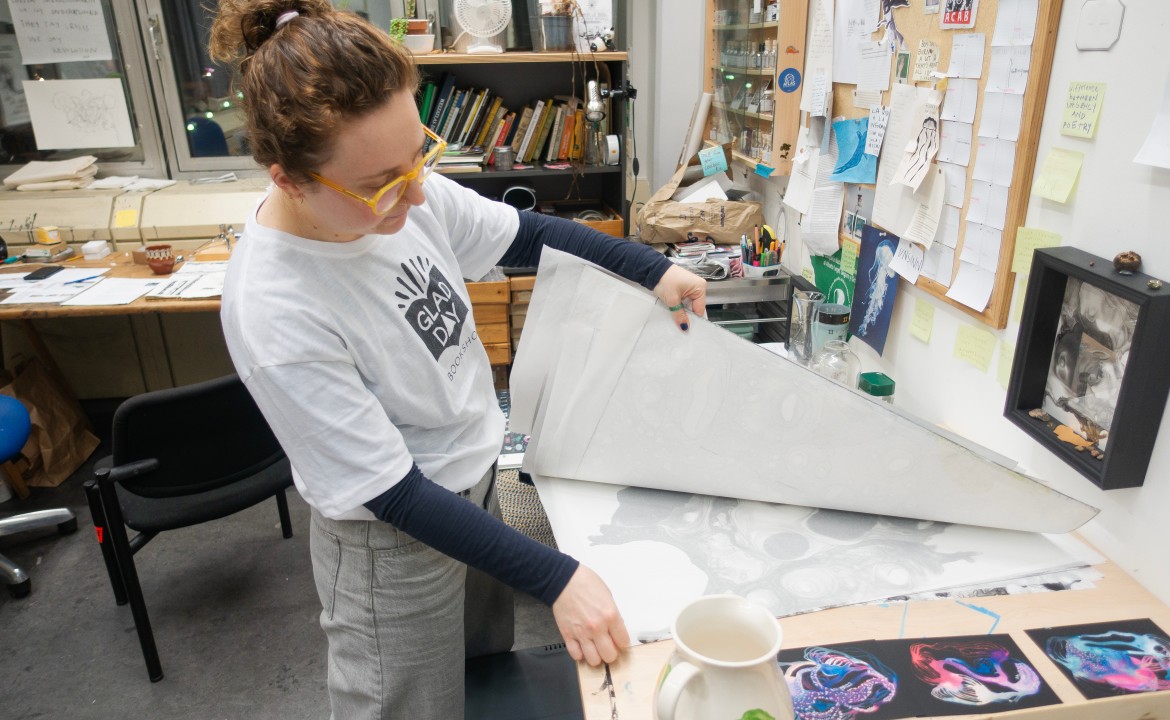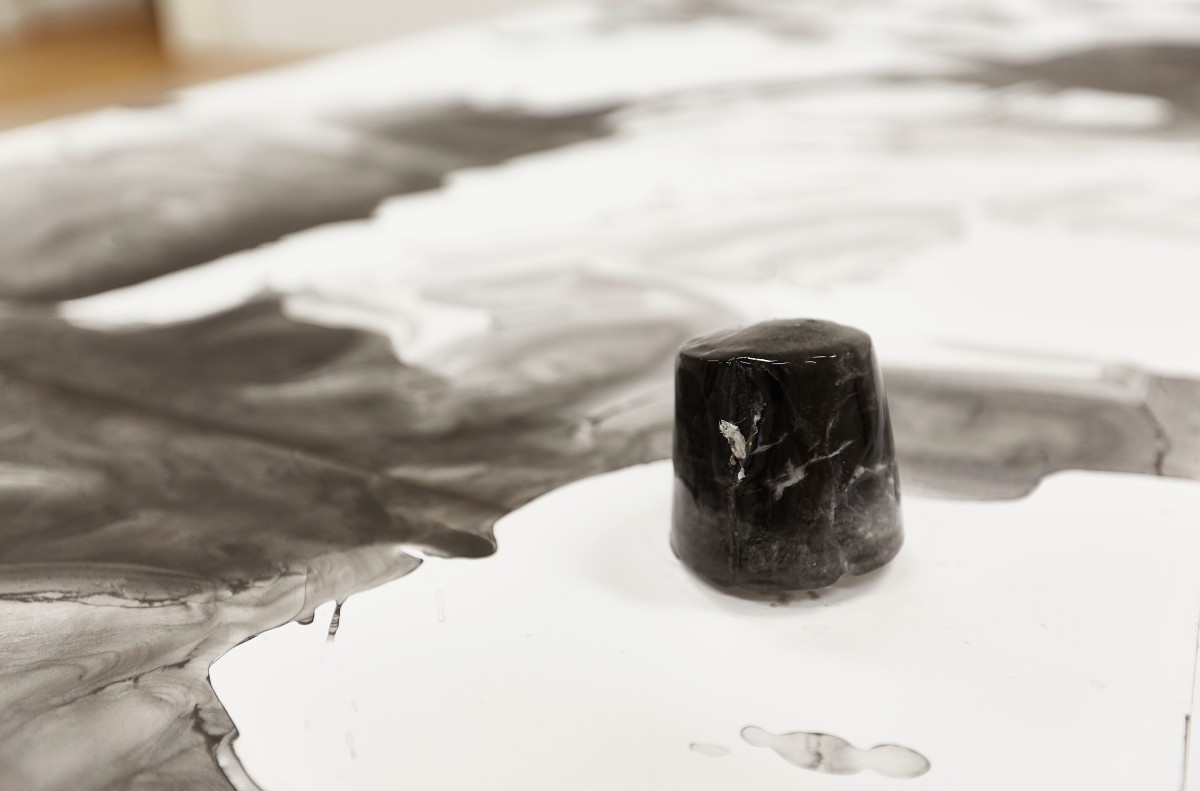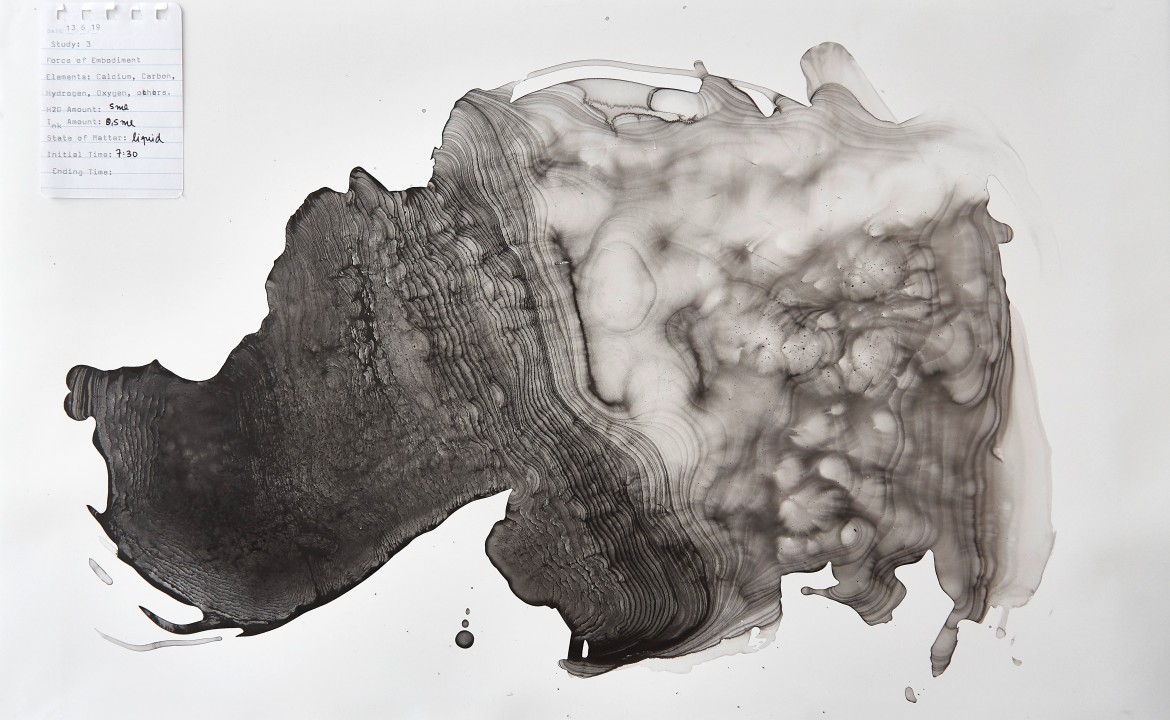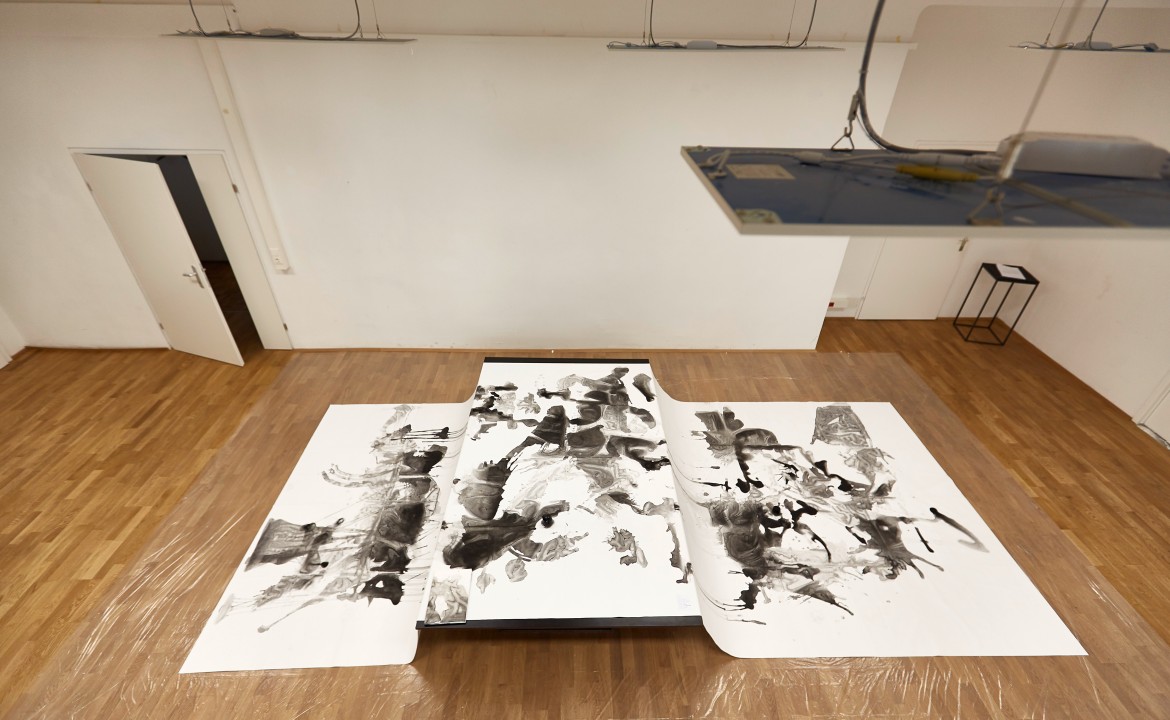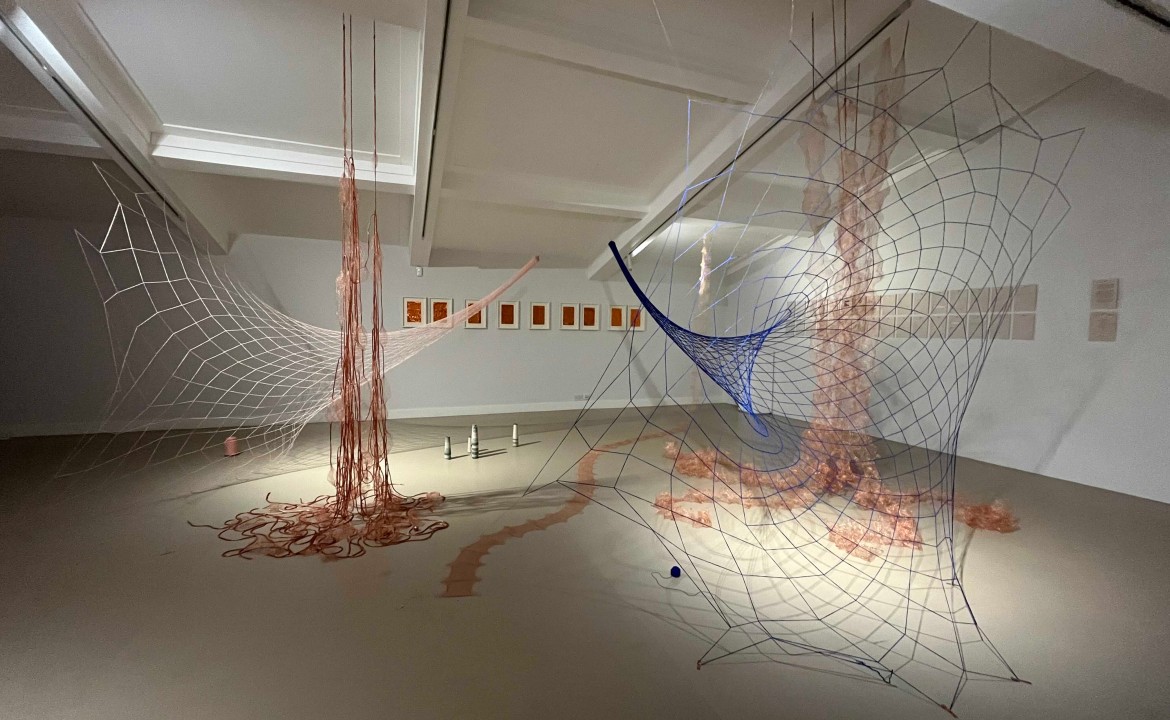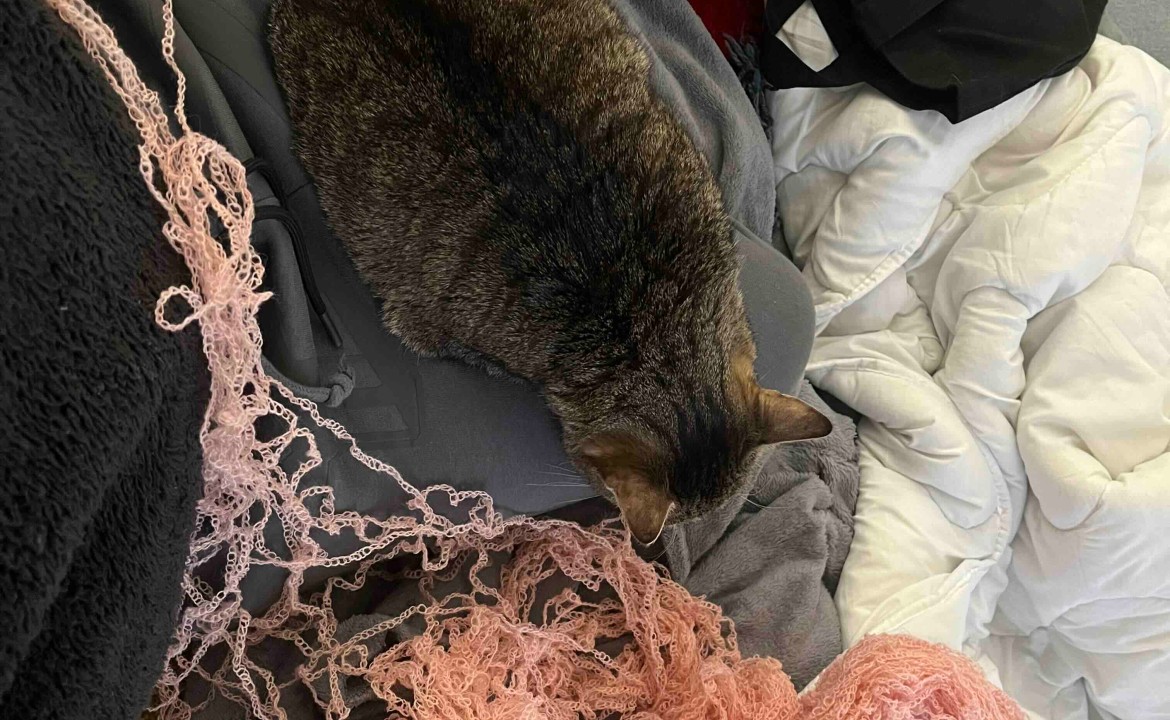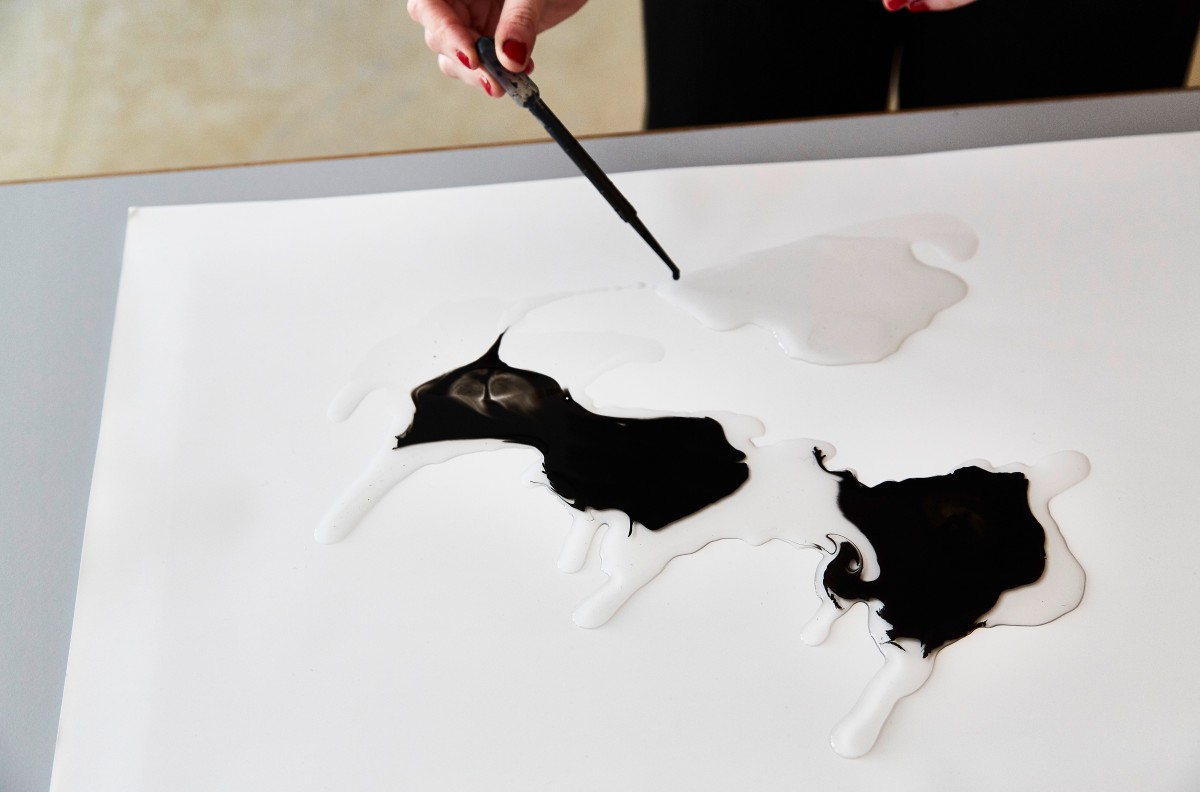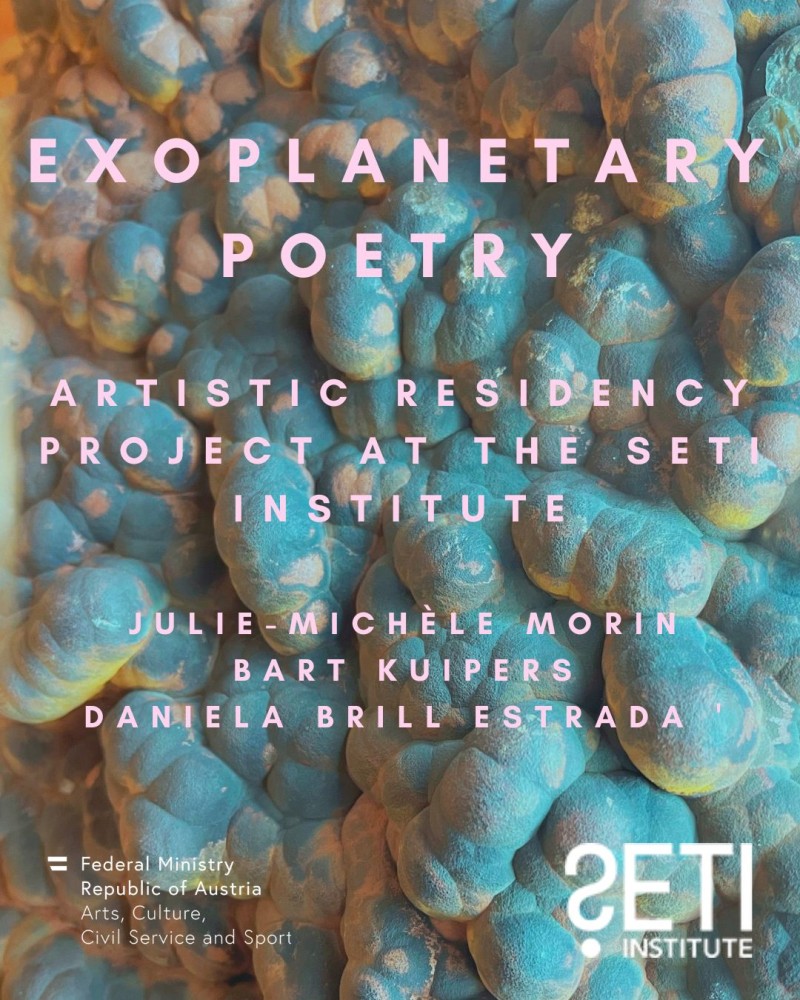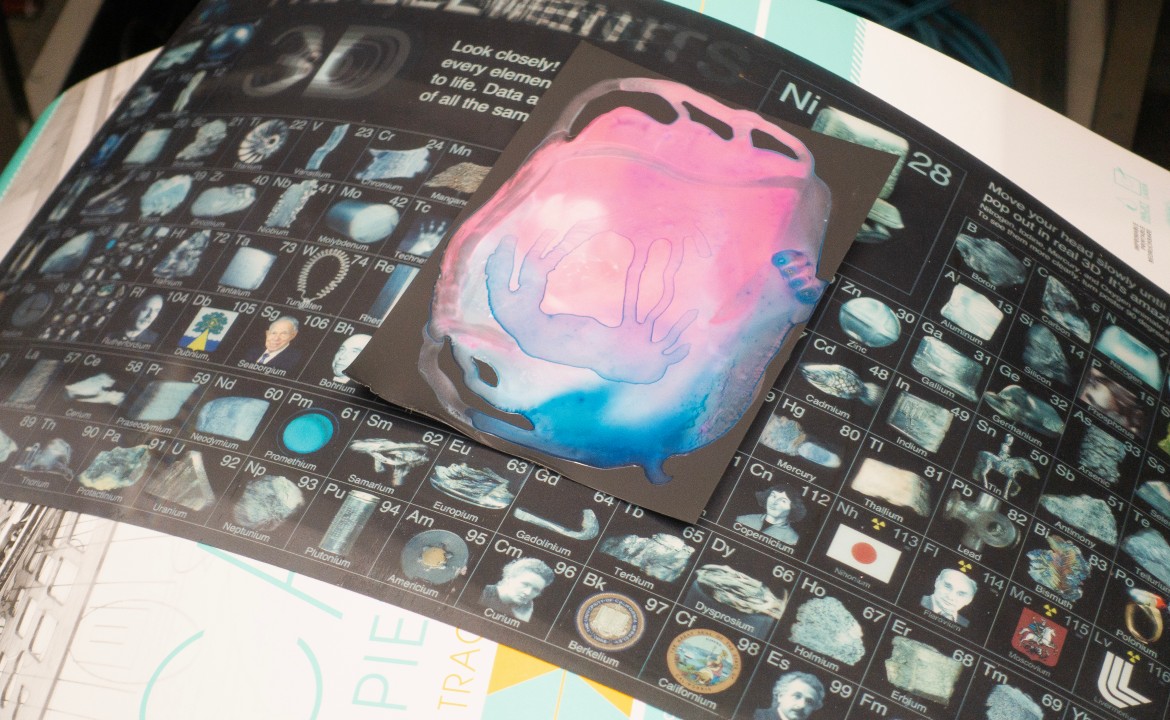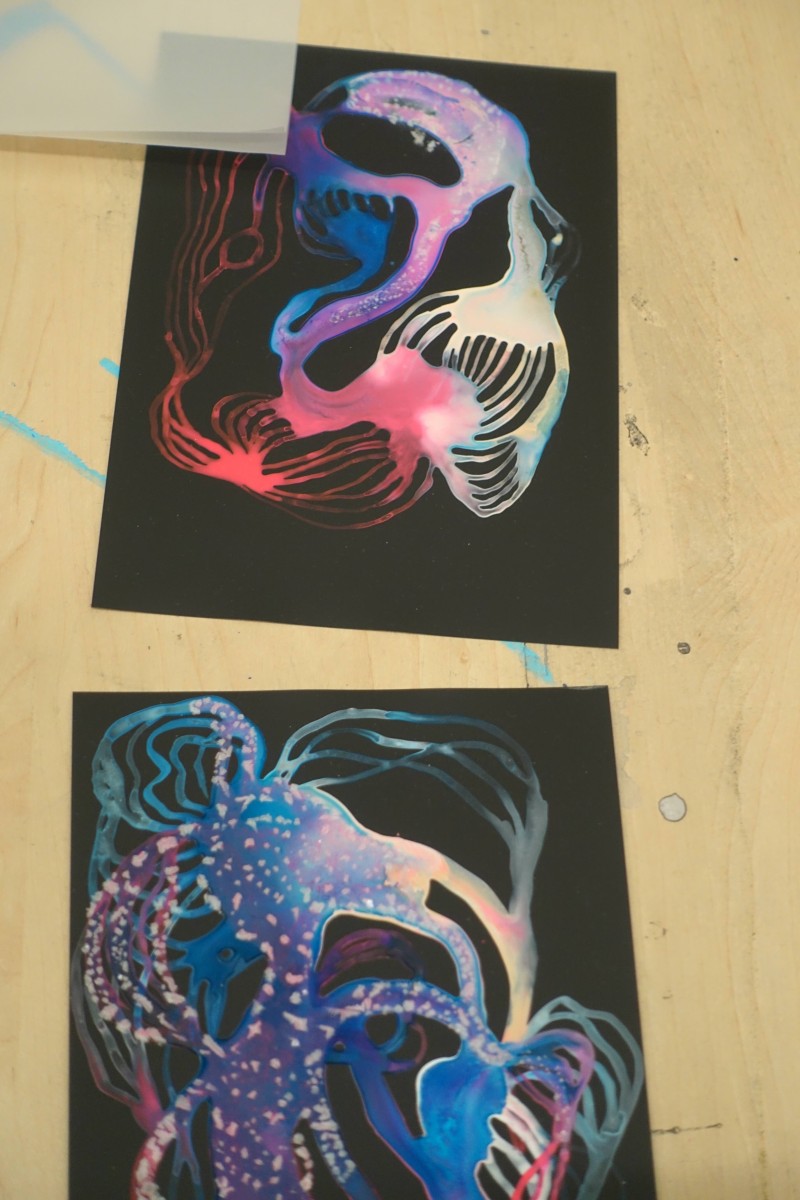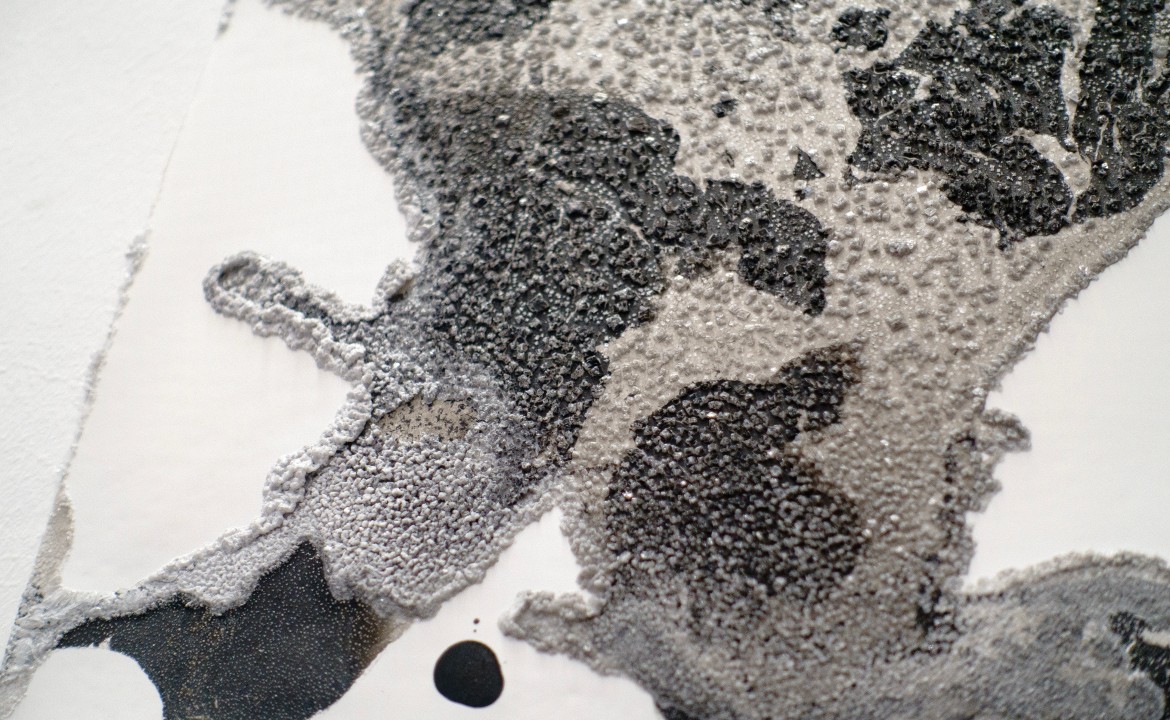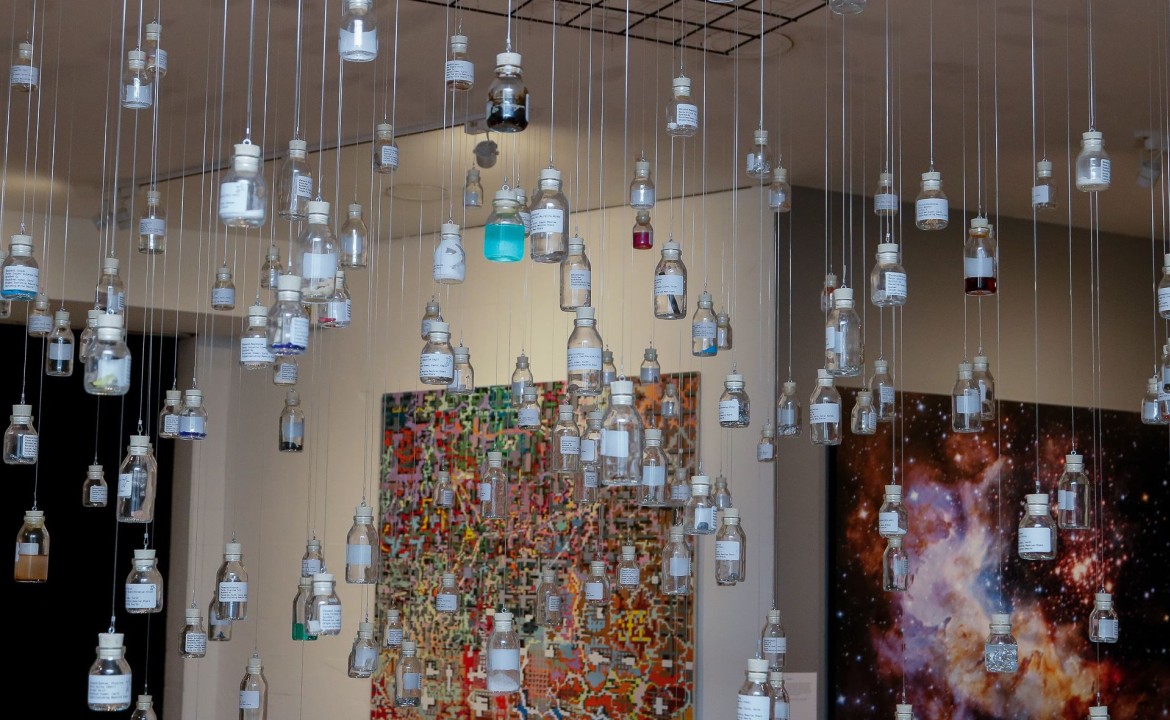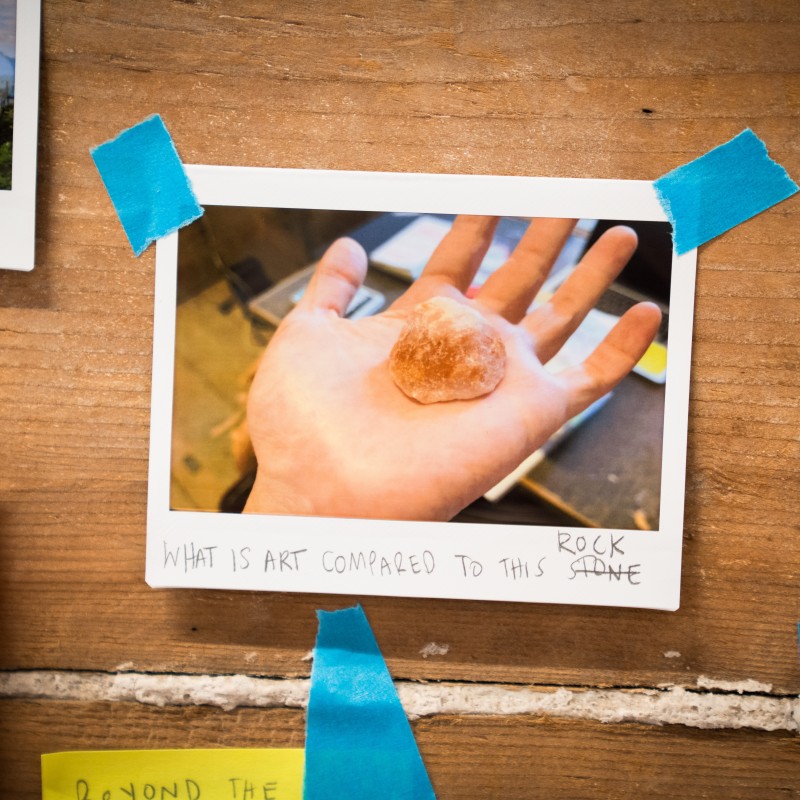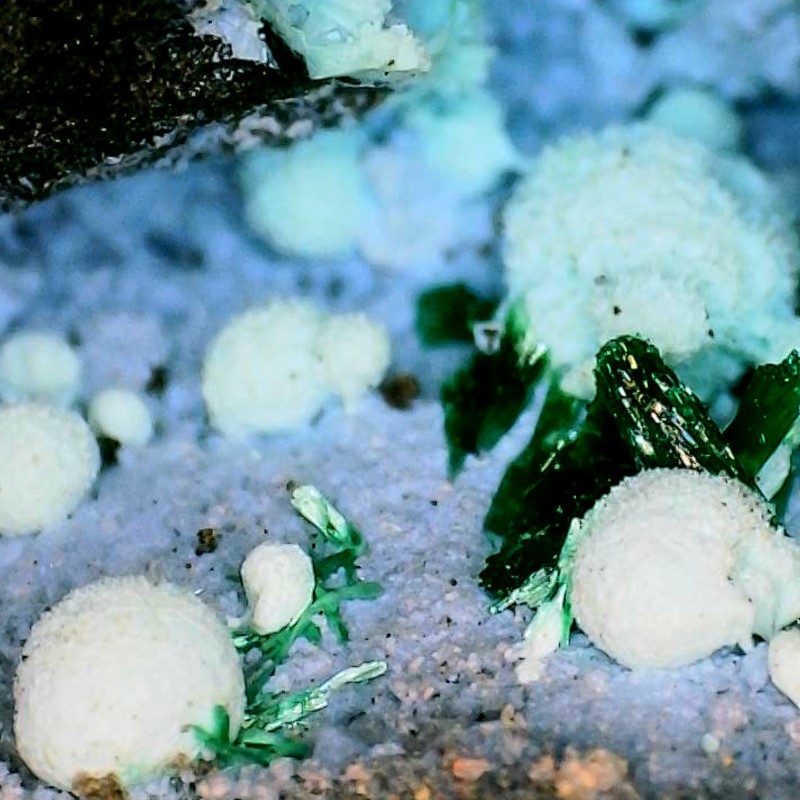Daniela in her studio space at West, Vienna, 2025
Thank you Daniela, for having me here at your studio space in Vienna. How does your life as an artist, researcher and student look like?
My life is kind of weird. Officially I work for the JKU in Linz, where I´m writing my PhD in art, science and protest at the art x science school for transformation. But I´m also an active artist. In my daily life I deal with keeping my plants
and my cats alive, and keeping myself alive. Twice a week I travel to Linz to work at the university, and twice a week I am
at the Angewandte. I travel a lot, usually once a month, or every two months to give workshops, presentations, to exhibit,
or for residencies, and then I have to find a catsitter.
"The division of disciplines happened in the west. It is not very old, that people think they are something different. Before colonisation, people were both the artist and the medicine person in one; people who could read the stars, also knew how to sing."
The artistic part of your master's project impressed me a lot. Can you tell us a bit about the materials you have used and the physical background?
For my master thesis I was researching specifically the trajectories of the chemical element of carbon, and a possible force
that would drive this chemical element to generate living or inert materials on earth. I proposed a speculative idea to take
a first step into dismantling the concept of static bodies, and rather imagine materials as trajectories, outside of categories
and binaries (such as alive/inert). So, I chose materials that are basic for artistic processes, such as ink, water and paper,
that would let me show possible trajectories of the elements, different states of matter, different time scales. i used water
because it allowed me to show it in three different states (solid ice, liquid water, gas) in a short amount of time.
Besides water I used carbon-based ink, and calcium-carbonate paper. The interaction between these elements allowed me to show almost in real time the mutation of materials, and the trace they leave behind while transforming and shapeshifting into another. Behind the wish to dismantle the binary of living/non-living is the political statement that matter and bodies, categorized by humans to study/control/oppress them, are actually fluid trajectories.
Besides water I used carbon-based ink, and calcium-carbonate paper. The interaction between these elements allowed me to show almost in real time the mutation of materials, and the trace they leave behind while transforming and shapeshifting into another. Behind the wish to dismantle the binary of living/non-living is the political statement that matter and bodies, categorized by humans to study/control/oppress them, are actually fluid trajectories.
Daniela's graduation project. Photos (c) Peter Kainz
Are you in contact with former or current AS Students?
Yes <3. I share a studio and collaborate closely with Monica LoCascio, with whom I just co-created a very cool installation Begriff des Körpers about space-time, black holes and human perception, exhibited right now until April at the Djanogly Art Gallery in Nottingham,
UK (one of those humans with whom a collaboration feels like magic).
I´m also in close contact with Marthin Rozo, who is my friend and my brother. I share a studio with Chiara Campanile and with Chris Kyritopoulos-Ninas, who is also the godfather of my two cats. I have collaborated with Marko Markovic, and Laura Stoll on a project about robots, performance and sensemaking. I really, really like working with them, or being invited to participate
on stuff they are organizing: a couple of months ago Marko organized a wonderful symposium on art, science and community and
it was mind-blowing to talk next to Naoki Matsuyama.
How nice, all these familiar names... Wonderful to see how Art&Science has brought together so many interesting people, who continue working with each other even after their studies.
How would you describe your artistic style?
I have concluded that I like collecting rocks, seeds, sand... That is my initial go-to. I like their forms and colors and
if they are minerals or igneous or volcanic or others. I like finding out how they formed. I don´t know how that leads to
a style, I collect rocks, chemical elements in different forms, powder, liquids, and then make installations with them, sometimes
they react or move or do things in real life, and then they are performing. Sometimes they are just present, telling a story,
usually about deep time, queerness, weirdness.
Would you like to introduce a certain project of yours? Something you are currently working on?
Mhhh ok ok, one of the projects I´m working on right now which is really exciting and nerdy is a residency project at the
SETI institute in California. At the SETI institute researchers are trying to find intelligent extraterrestrial life. I applied for the residency program “cosmic consciousness”
with two artists that I really admire - Julie-Michéle Morin and Bart Kuipers. We applied as a team with a project we called
“exoplanetary poetry”.
In it, we will co-create poetry with a possible extraterrestrial entity. We will train an AI using the chemical data of exoplanets
(the planets on which life could be possible). For this we got the AI and art stipend from the Austrian ministry of arts and
sports. So, what we think is that if there is intelligent life somewhere it will most probably have a body, such as ours,
but possibly very, very different than ours. To communicate with this body, which might not have eyes or ears, but very possibly
a perceiving surface or skin, we try to think of a possible universal language.
Our human bodies are made of the same chemical elements as the earth (something I researched in a previous project I made
while I was studying art & science, called “our celestial bodies”), and if there are living bodies on another planet they will surely be made from the same chemical elements as such planet.
One of the possible universal languages to communicate with those bodies is the chemistry they are made of: here on earth,
we perceive, with our human senses, for example, smells (of the wet soil, of the ocean), or on the skin we sense temperature
changes in the atmosphere. They, the aliens, must surely also perceive chemical processes made from the same components as
their own bodies. We will co-create chemical poetry, made from their own chemical elements, to speculate on alien communication.
Pretty cool.
Our Place in Space in Bogotá, Colombia. 2018
"I try to act like a snail, making sure to eat the whole lettuce slowly and steadily,
patiently, no rush. Most of the times it works..."
You are travelling between countries and ateliers, international residencies are important to you; can you tell us how you manage this?
Honestly I don´t know how I manage. Last year I read a book about snails, and how they slowly eat a leaf of lettuce. And I
often tell myself “like a gastropod, dani”, step by step and day by day. If I wake up and think about all the things and travels
and planes and airports and stuff and texts that I have waiting for me in the next months I go crazy. I prefer to wake up
and have in mind the next couple of hours. What is waiting for me today? What can I do to make the rest easier?
I try to act like a snail, making sure to eat the whole lettuce slowly and steadily, patiently, no rush. Most of the times
it works, sometimes I need to breath deep and get through it, not easy, specially when there´s a deadline or I have to do
serious stuff for the Phd.
I think being an artist, to me, means constantly working, because all I love doing also resonates with my work, so if I take
vacation to go to Barcelona to see my brother I will spend the time looking at sand on the beach with my microscope, and start
thinking about its chemical properties, and how it relates to my queerness, and how I could bring it into my next work, and
so on, the cycle never ends.
What kind of job would you do if you had not become an artist?
Geologist.
At last, would you like to tell us something about your remarkable biography?
I was born in Bogotá and grew up in Chía, a town north from Bogotá. I sometimes feel that everything I do is connected to
the landscape there. Bogotá shaped the way I walk on the street, the way I like to eat fruits, the colors I like to use when
I draw. I still sometimes go to Bogotá and think of not taking the flight back to Europe.
Home is where your heart is... Thank you for your time and openness to share some personal info with us. I wish you continued success in your artistic life and look forward to new projects of yours, which surely will amaze me - as they always have - with their aesthetics and the meaningful depth behind them.
DANIELA BRILL ESTRADA
@danielabrillestrada
www.danielabrillestrada.com
Daniela Brill Estrada @Art&Science
Interview: Gerda Tschœrdy Fischbach. February 2025
Photos: Daniela Brill Estrada and Gerda Fischbach

